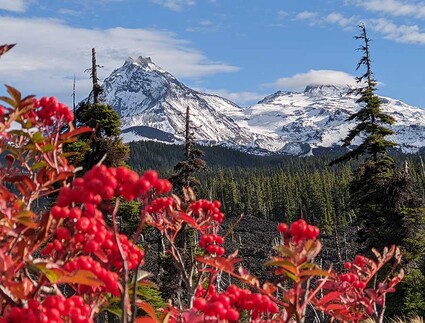Don’t expect a drought-buster this winter
Last updated 10/12/2021 at Noon
Last summer’s record-setting heat was adversely impactful here in the western U.S., leading to numerous wildfires that burned well into the fall. The heat worsened already severe drought conditions in our region.
Many residents are hoping for the upcoming winter season to produce generous amounts of precipitation and cool temperatures. Is this likely to happen? Is it even in the cards?
The winter of 2021-22 is forecasted to feature the second of back-to-back La Niñas (though weaker than that of last year). Most of the prognosticators foresee a winter similar to last year’s.
Temperatures should average about normal to slightly below, with precipitation levels modestly above normal. But even if the rain/snowfall is heavier than expected, it cannot possibly result in a drought-buster. That is not in the cards.
Of the various cyclical climatic phenomena that occur over the globe, the El Niño Southern Oscillation (ENSO) remains the most useful for forecasting weather on a seasonal time scale. The ENSO describes the condition of the tropical Pacific Ocean with regard to water temperature and the strength of surface winds, and it comes in one of three phases. When the ocean is sufficiently warm, an El Niño is said to exist; when cool, a La Niña is in play. The phase is neutral when temperatures are near normal.
For those of us here in the Pacific Northwest, El Niños usually bring warmer and drier winters overall, while La Niñas tend to be cooler and wetter. This correlation isn’t as good during a neutral phase.
Currently the ENSO phase is neutral, but tropical waters are cooling, and the National Oceanic and Atmospheric Administration’s Climate Prediction Center is expecting a 70-80 percent chance that La Niña will return this winter.
Before jumping headlong into some of the predictions, let’s pause and take a brief look back at how the 2020-21 winter played out.
Because the development of a La Niña was foreseen, the forecast called for a cool and wet winter with generous amounts of mountain snow. Indeed, a healthy La Niña showed up on time and persisted through the winter. So, what was the resulting weather?
In Seattle, during the five-month period November 2020 through March 2021, precipitation totaled almost two inches above normal. Temperatures were near normal. But during the same time period at Portland and Redmond, nearly two inches less than normal precipitation fell. Temperatures averaged above normal at both stations.
The Cascade snowpack was more than 130 percent of normal in northern and central Washington, while in Oregon it ranged from near 100 percent of normal in the north to 70-80 percent in the central part of the state. It was even drier in southern Oregon. Frequent storms did indeed make their way into the Northwest (though mostly later in the season in Oregon), but it was as if the storm track was displaced to the north of its normal position.
So, here we are about to enter the second of back-to-back La Niña winters. Is there any additional predictive value that can be applied to the second La Niña in this situation?
It turns out the following La Niña is usually weaker than the first. According to Paul Pastelok, AccuWeather’s Senior Meteorologist, who leads a group of long-range forecasters, “La Niña may not come and do the same things that we typically see because it’s weaker.”
The Pacific Northwest and Northern Rockies will still experience a wet winter with plenty of snow in the mountains, but it might not total as much as last winter.
Pastelok also believes La Niña-like conditions will occur early, then fade as the season progresses. This opens the door for other factors to influence the weather later in the winter. There are also signs that the polar vortex may weaken, allowing arctic air to sag southward into the U.S. before the official start of winter.
Pete Parsons, lead meteorologist at the Oregon Department of Forestry, has advanced a similar scenario. A highlight in his forecast for western Oregon is, “Expect alternating cool and mild periods in October and November, but the chances for below-average temperatures, cold-air outbreaks, and significant valley snowfall increase dramatically in December.”
On September 16, the Climate Prediction Center issued its forecast for the period December through February. It calls for cooler than normal temperatures in most of Washington and western Oregon, and above normal precipitation in Washington, Oregon, Idaho, and Montana.
But here’s the thing: In recent years, temperatures have been on the rise nearly everywhere across the planet while precipitation levels have decreased, at least in our neck of the woods. Is climate change lowering the reliability of some of the methods seasonal forecasters have been using for decades?
In the past 11 years, there have been five La Niñas, two El Niños, and four neutral phases. In our part of the world that should have caused temperatures to trend downward, or at least shown little change, resulting in more precipitation. Instead, the opposite is true.
Arctic air intrusions (where temperatures plummet to well below zero degrees Fahrenheit) are not as frequent and don’t last as long as they used to, according to the memories of some old-timers here in Sisters Country. Since 2009, there have only been three such events, all of relatively short duration.
While these data certainly are not proof of climate change, they are consistent with the long-term warming and drying taking place in our region. Perhaps atmospheric scientists will find a way to accurately quantify climate change in a way that can be useful to improve future seasonal forecasts.












Reader Comments(0)